The U.S. economy was on a tear in 2019. It grew 2.3%, added 2.1 million jobs, and unemployment was at a historic low of 3.5%.
Cities were thriving. The Brookings Metro Monitor found that from 2009 to 2019, 179 of the nation’s 191 largest metro areas had posted growth in jobs, adult employment rates, and median earnings.
But the record-long U.S. economic expansion ground to a halt in March 2020, when the novel coronavirus was declared a national emergency and many U.S. states began to shut down to prevent its spread. By April 2020, unemployment reached 14.8%.
Back then, Brookings predicted that cities most reliant upon certain vulnerable industries, such as energy, leisure and hospitality, would be hit hardest, while tech-oriented university towns were expected be safest.
To find out how cities are faring since the pandemic hit, Brookings gathered employment and housing data as well as economic indicators like retail vacancies and workplace visits from 192 metro areas with populations over 250,000.
The results are mixed. Among the country’s 53 largest cities of over 1 million, the unemployment recovery is weakest in Las Vegas, where it's 1.8% higher than pre-pandemic, New York (1.6%) and Houston (1.4%.) Of 191 U.S. metro areas with populations of at least a quarter million, 121 (63%) had fewer jobs in March 2022 than in February 2020, Brookings says.
And while many tech workers may be enjoying a life of mostly working from home, the loss of these office workers has had a significant impact on small businesses in many cities.
Retail vacancy recovery is weakest in San Francisco, where work visits are down 32.7%, according to Brookings. The absence of office workers’ earnings that once flowed to cafes, retail outlets, restaurants and entertainment in the city has had a big impact on the city’s downtown, where swaths of shops, restaurants and cafes remain closed, the San Francisco Chronicle reported in June. A record high 20.4 million square feet of office space, or roughly 24% of the citywide total, was vacant at the end of the first quarter of this year, and San Francisco unlikely to ever get office workers returning more than 50% of the time, according to the Chronicle.
In New York City, as of April this year, at least 1,000 restaurants have closed since March 2020 due to the pandemic, according to New York Eater.
And college towns have not emerged unscathed, Brookings reports. The extended absence of students seems to have resulted in permanent business closures in several places. Of the metro areas with significant increases in retail vacancies, several are college towns—Ann Arbor, Mich.; Boulder, Colo.; College Station, Texas; Lansing, Mich.; and Santa Cruz, Calif.
Here are the cities that Brookings found to have the strongest and weakest recoveries in jobs, work visits and housing prices over two years of pandemic.
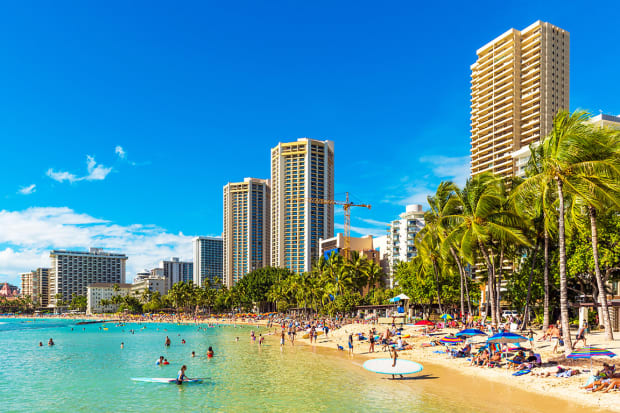
The 5 Cities With the Weakest Job Recovery
Using data from the Bureau of Labor Services, Brookings found the cities with the weakest jobs recovery from Feb 2020 to March 2022, including total (non-farm) full- and part-time jobs. Honolulu ranks worst of all 191 cities.
Urban Honolulu
- Jobs: −9.6% (191st)
- Workplace visits: −26.1%
- Median home list price: +15.2%
gg-foto / Shutterstock
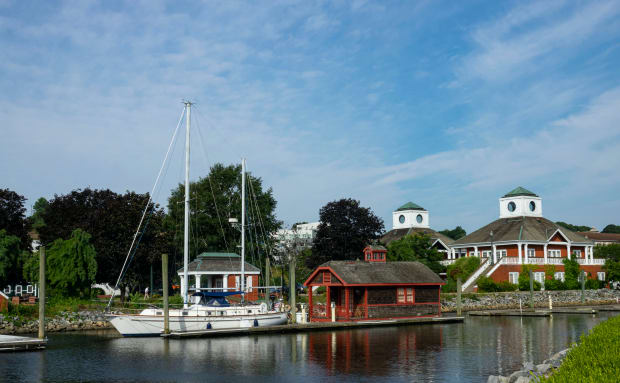
The 5 Cities With the Weakest Job Recovery
Norwich-New London, Conn.
- Jobs: −7.9% (190th)
- Workplace visits: −3.9%
- Median home list price: +28.0%
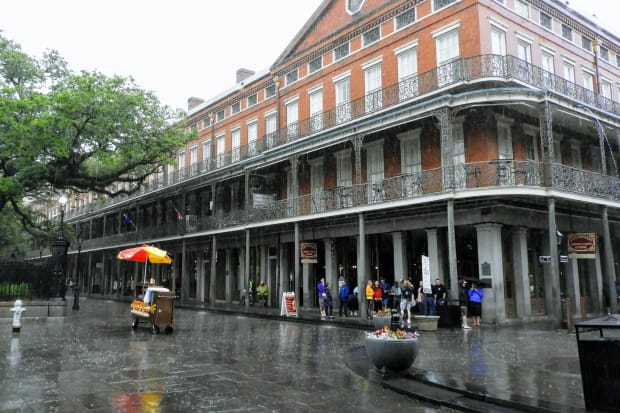
The 5 Cities With the Weakest Job Recovery
New Orleans-Metairie, La.
- Jobs: −6.9% (189th)
- Workplace visits: −21.3%
- Median home list price: +20.4%
Trina Barnes / Shutterstock
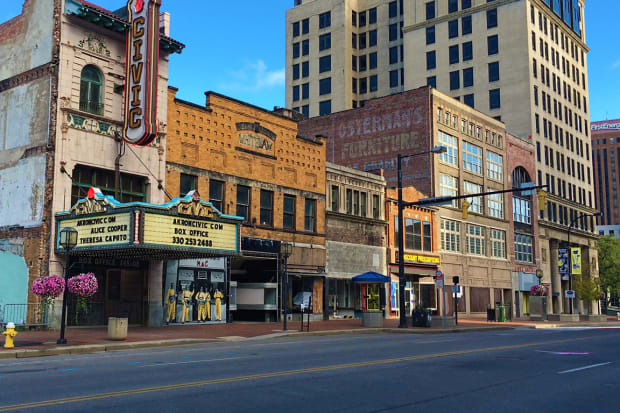
The 5 Cities With the Weakest Job Recovery
Akron, Ohio
- Jobs: −6.4% (188th)
- Workplace visits: −18.1%
- Median home list price: +4.5%
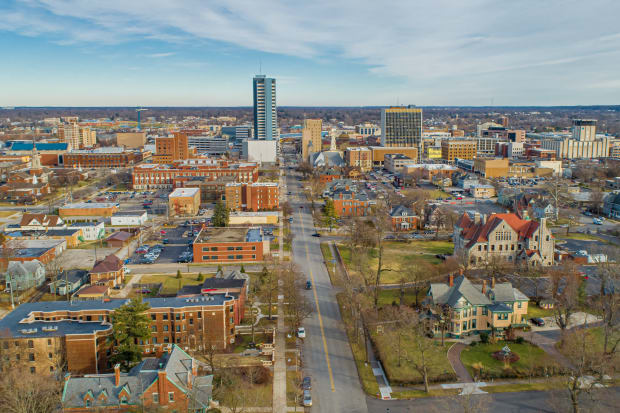
The 5 Cities With the Weakest Job Recovery
South Bend-Mishawaka, Ind.-Mich.
- Jobs: −6.2% (187th)
- Workplace visits: −11.2%
- Median home list price: +12.3%
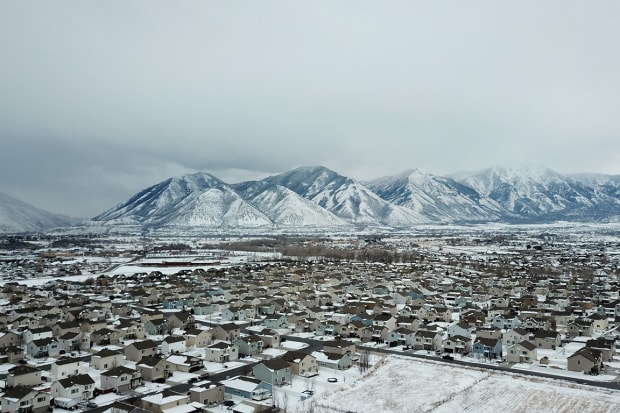
5 Cities With the Strongest Job Recovery
The following cities showed the strongest job growth between March 2022 and February 2020. Provo, Utah has fared best with 11.2% more jobs.
Provo-Orem, Utah
- Jobs: +11.2% (1st)
- Workplace visits: −23.2%
- Median home list price: +37.3%
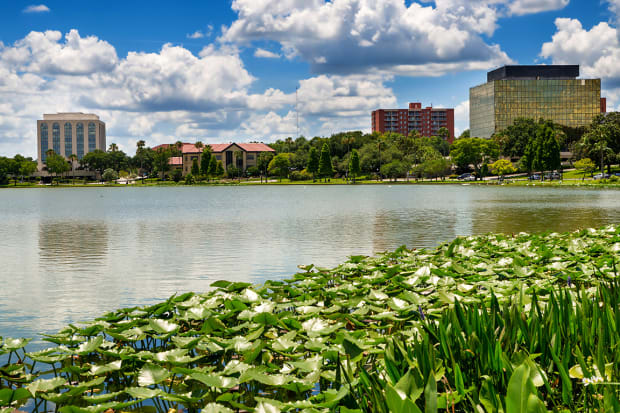
5 Cities With the Strongest Job Recovery
Lakeland-Winter Haven, Fla.
- Jobs: +8.7% (2nd)
- Workplace visits: −9.8%
- Median home list price: +46.6%
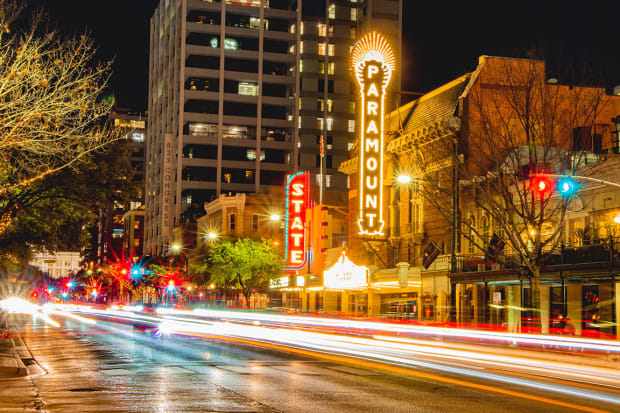
5 Cities With the Strongest Job Recovery
Austin-Round Rock-Georgetown, Texas
- Jobs: +7.1% (3rd)
- Workplace visits: −23.6%
- Median home list price: +61.1%
PhilipR : Shutterstock
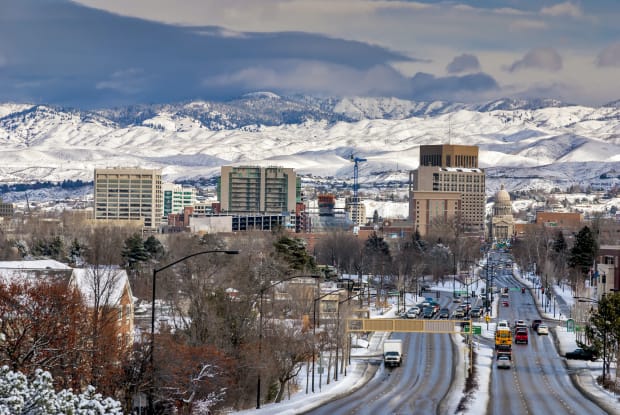
5 Cities With the Strongest Job Recovery
Boise, Idaho
- Jobs: +5.6% (4th)
- Workplace visits: −14.7%
- Median home list price: +54.3%
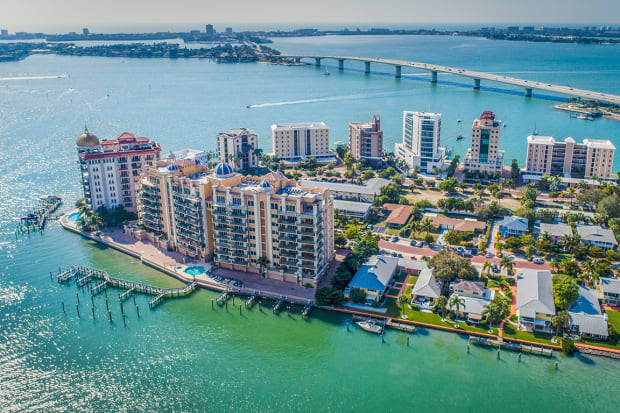
5 Cities With the Strongest Job Recovery
North Port-Sarasota-Bradenton, Fla.
- Jobs: +5.2% (5th)
- Workplace visits: −12.9%
- Median home list price: +55.3%
Shutterstock
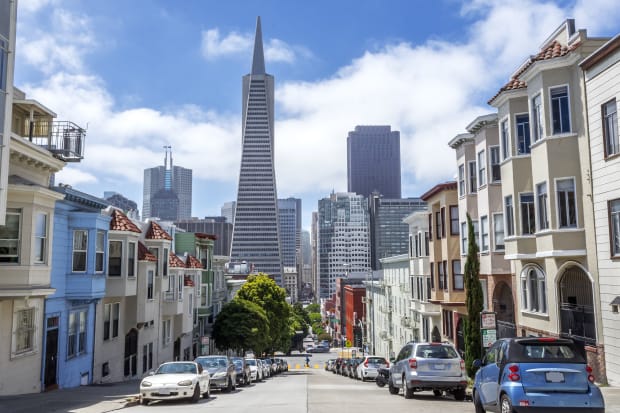
Cities With the Biggest Drop in Workplace Visits
Here are the cities with the highest average change in workplace visits from January 2020 to April 2022. It comes as no surprise that these cities are all tech hubs, where many employees can work remotely. San Francisco is down nearly a third.
San Francisco-Oakland-Berkeley, Calif.
- Jobs: −3.8%
- Workplace visits: −32.7% (192nd)
- Median home list price: +5.7%
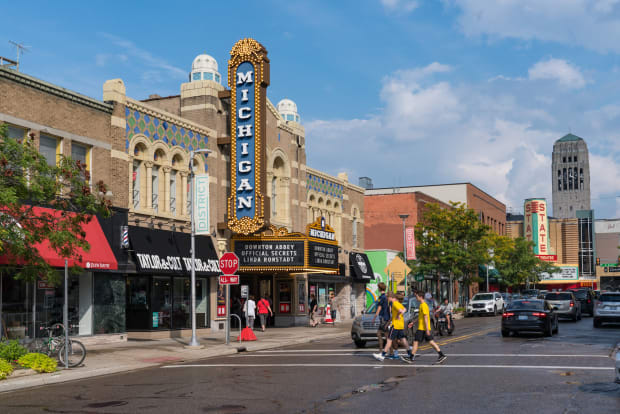
Cities With the Biggest Drop in Workplace Visits
Ann Arbor, Mich.
- Jobs: −1.9%
- Workplace visits: −32.2% (191st)
- Median home list price: +6.5%

Cities With the Biggest Drop in Workplace Visits
San Jose-Sunnyvale-Santa Clara, Calif.
- Jobs: −2.4%
- Workplace visits: −31% (190th)
- Median home list price: +12.4%
Uladzik Kryhin / Shutterstock
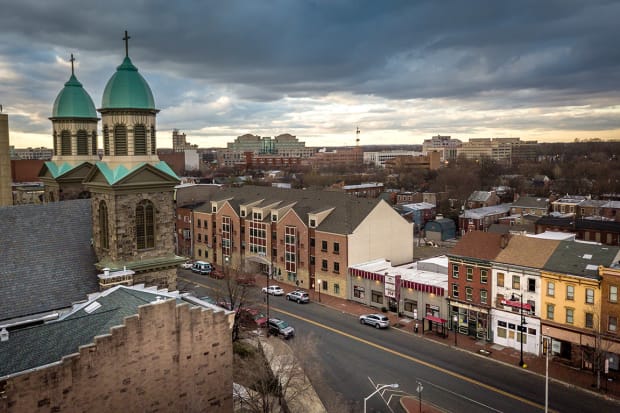
Cities With the Biggest Drop in Workplace Visits
Trenton-Princeton, N.J.
- Jobs: −0.4%
- Workplace visits: −29.2% (189th)
- Median home list price: −14.4%
Shutterstock

Cities With the Biggest Drop in Workplace Visits
Seattle-Tacoma-Bellevue, Wash.
- Jobs: −2.2%
- Workplace visits: −29% (188th)
- Median home list price: +22.8%
Shutterstock

Cities With the Smallest Drop in Workplace Visits
These are the cities with the smallest change in workers traveling to the office between Jan 2020 to April 2022. These metros may have relatively fewer office jobs that can be performed remotely, or a stronger cultural leaning toward in-person work, Brookings says. Health care is one of the largest industries in Ocala, Fla.
Ocala, Fla.
- Jobs: +2.3%
- Workplace visits: −3.2% (1st)
- Median home list price: +48.2%
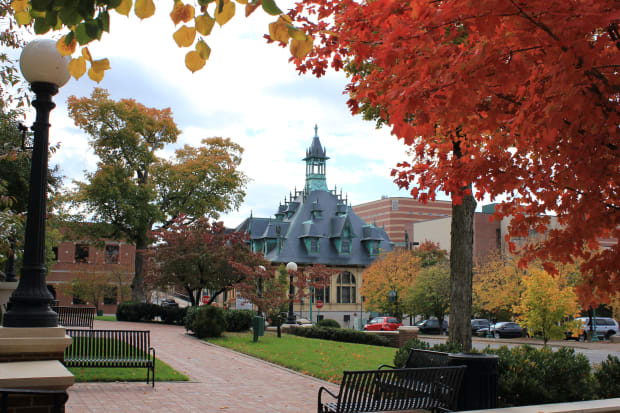
Cities With the Smallest Drop in Workplace Visits
Clarksville, Tenn.
- Jobs: +2.4%
- Workplace visits: −3.8% (2nd)
- Median home list price: +33.3%
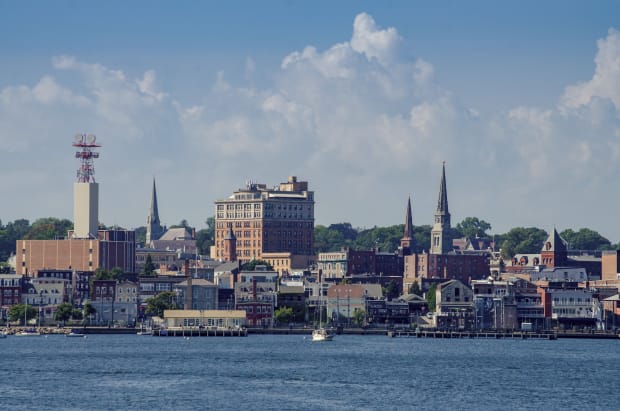
Cities With the Smallest Drop in Workplace Visits
Norwich-New London, Conn.
- Jobs: −7.9%
- Workplace visits: −3.9% (3rd)
- Median home list price: +28%
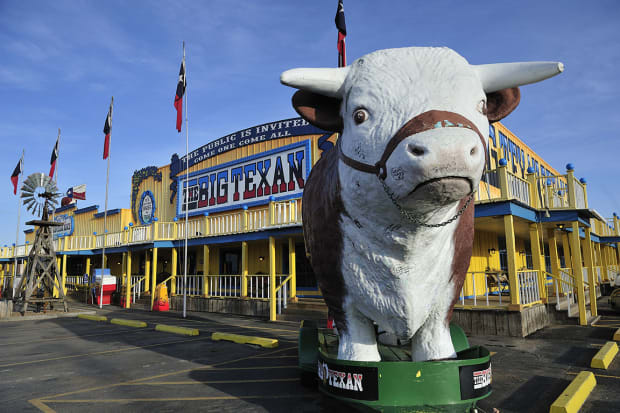
Cities With the Smallest Drop in Workplace Visits
Amarillo, Texas
- Jobs: +2.0%
- Workplace visits: −4% (4th)
- Median home list price: +31.5%
T photography/ Shutterstock
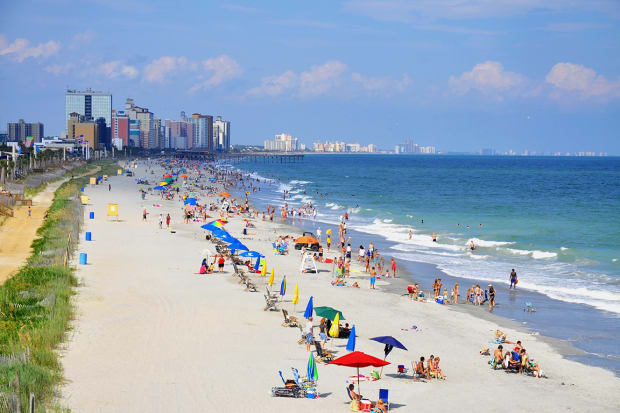
Cities With the Smallest Drop in Workplace Visits
Myrtle Beach-Conway-North Myrtle Beach, S.C.-N.C.
- Jobs: +1.1%
- Workplace visits: −4.7% (5th)
- Median home list price: +52.9%
Shutterstock
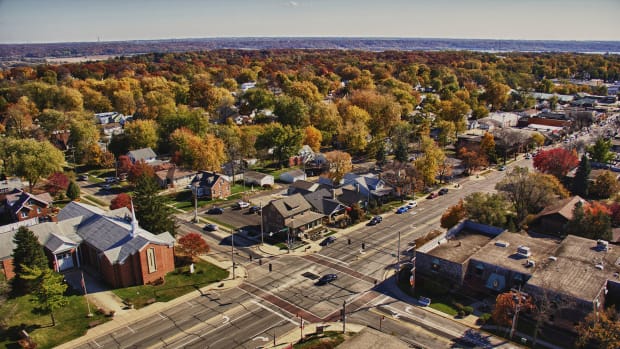
Cities With the Biggest Drop in Home Prices
These cities had the biggest drop in median list price of active for-sale homes from March 2020 to March 2022.
Peoria, Ill.
- Jobs: −3.4%
- Workplace visits: −21.9%
- Median home list price: −13.8% (191st)
Shutterstock

Cities With the Biggest Drop in Home Prices
Milwaukee-Waukesha, Wis.
- Jobs: −4.0%
- Workplace visits: −18.5%
- Median home list price: −10% (190th)
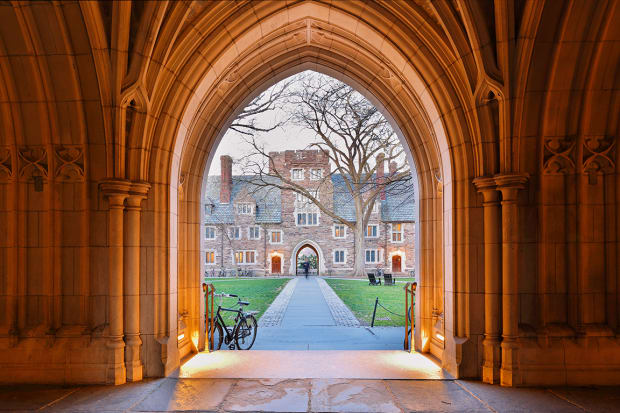
Cities With the Biggest Drop in Home Prices
Trenton-Princeton, N.J.
- Jobs: −0.4%
- Workplace visits: −29.2%
- Median home list price: −14.4% (189th)
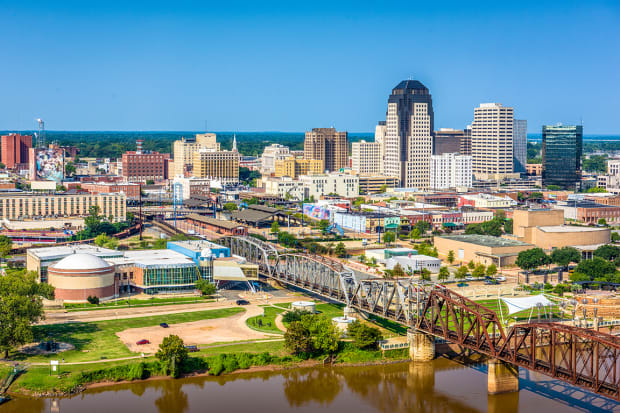
Cities With the Biggest Drop in Home Prices
Shreveport-Bossier City, La.
- Jobs: −2.8%
- Workplace visits: −10.1%
- Median home list price: −8% (188th)

Cities With the Biggest Drop in Home Prices
Salinas, Calif.
- Jobs: −3.6%
- Workplace visits: −22.9%
- Median home list price: −4.3% (187th)
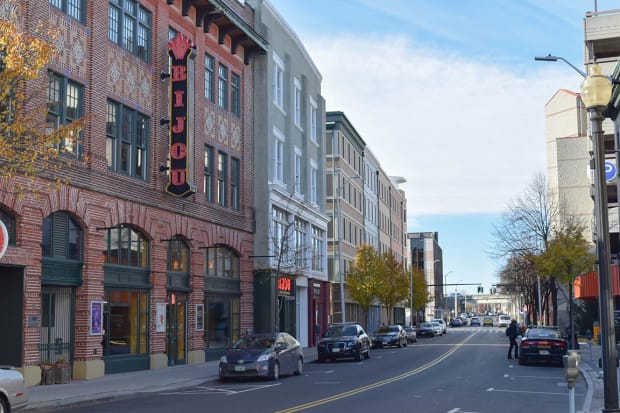
Cities With the Biggest Increase in Home Prices
These five cities had the biggest increase in the median list price of active for-sale homes from March 2020 to March 2022.
Bridgeport-Stamford-Norwalk, Conn.
- Jobs: −2.8%
- Workplace visits: −25.5%
- Median home list price: +69.9% (1st)
Wendell Guy / Shutterstock
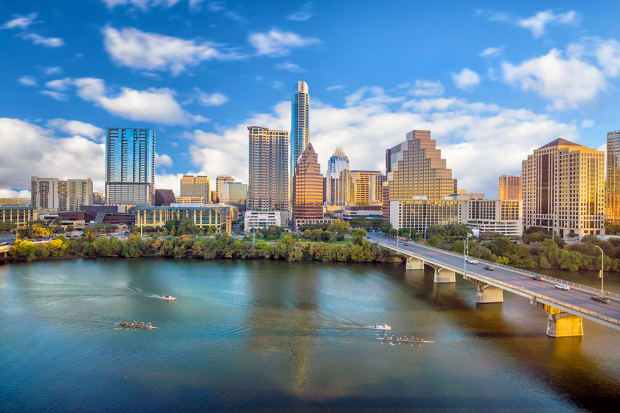
Cities With the Biggest Increase in Home Prices
Austin-Round Rock-Georgetown, Texas
- Jobs: +7.1%
- Workplace visits: −23.6%
- Median home list price: +61.1% (2nd)
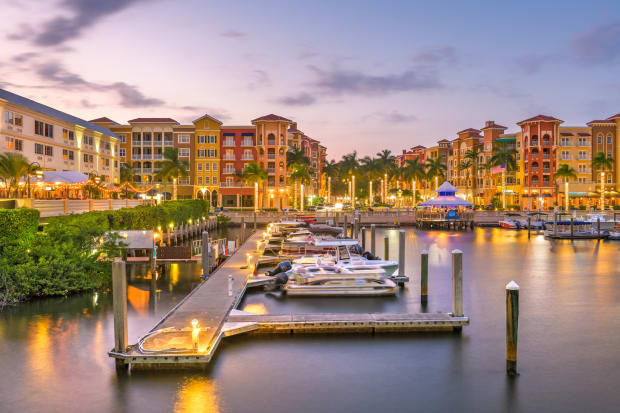
Cities With the Biggest Increase in Home Prices
Naples-Marco Island, Fla.
- Jobs: +1.0%
- Workplace visits: −5.7%
- Median home list price: +65.1% (3rd)

Cities With the Biggest Increase in Home Prices
Visalia, Calif.
- Jobs: +2.4%
- Workplace visits: −18.9%
- Median home list price: +63.9% (4th)

Cities With the Biggest Increase in Home Prices
Boise City, Idaho
- Jobs: +5.6%
- Workplace visits: −14.7%
- Median home list price: +54.3% (5th)
Source: COVID-19’s economic impact by metro area, by Alan Berube and Eli Byerly-Duke at Brookings.edu.
Shutterstock







